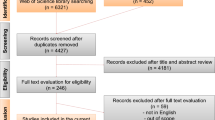Abstract
The incidence of complications after the ureteroscopic surgery is reported at 7–25%. A recent study of 11,885 patients in 32 countries and 114 institutions reported that the most common complications during URS were bleeding, ureteral perforation, and failure of ureteroscope insertion, with 1.41%, 1.05%, and 1.67%, respectively [1]. Most postoperative complications are minor, and very few require additional treatment [1–3]. However, some complications could be of significance. The most relevant perioperative complications are urinary tract infection (UTI), sepsis, ureteral injury, and ureteral stricture. This chapter will provide advice on how to prevent and manage the complications related to ureteroscopy.
Access this chapter
Tax calculation will be finalised at checkout
Purchases are for personal use only
Similar content being viewed by others
References
Somani BK, Giusti G, Sun Y, Osther PJ, Frank M, De Sio M, et al. Complications associated with ureterorenoscopy (URS) related to treatment of urolithiasis: the Clinical Research Office of Endourological Society URS Global study. World J Urol. 2017;35:675–81.
Geavlete P, Georgescu D, Nita G, Mirciulescu V, Cauni V. Complications of 2735 retrograde semirigid ureteroscopy procedures: a single-center experience. J Endourol. 2006;20:179–85.
Perez Castro E, Osther PJ, **ga V, Razvi H, Stravodimos KG, Parikh K, et al. Differences in ureteroscopic stone treatment and outcomes for distal, mid-, proximal, or multiple ureteral locations: the Clinical Research Office of the Endourological Society ureteroscopy global study. Eur Urol. 2014;66:102–9.
De La Rosette J, Denstedt J, Geavlete P, Keeley F, Matsuda T, Pearle M, CROES URS Study Group. The clinical research office of the endourological society ureteroscopy global study: indications, complications, and outcomes in 11,885 patients. J Endourol. 2014;28:131–9.
Traxer O, Thomas A. Prospective evaluation and classification of ureteral wall injuries resulting from insertion of a ureteral access sheath during retrograde intrarenal surgery. J Urol. 2013;189:580–4.
Rubenstein RA, Zhao LC, Loeb S, Shore DM, Nadler RB. Prestenting improves ureteroscopic stone-free rates. J Endourol. 2007;21:1277–80.
Netsch C, Knipper S, Bach T, Herrmann TR, Gross AJ. Impact of preoperative ureteral stenting on stone-free rates of ureteroscopy for nephroureterolithiasis: a matched-paired analysis of 286 patients. Urology. 2012;80:1214–9.
Turk C, Petrik A, Sarica K, Seitz C, Skolarikos A, Straub M, et al. EAU guidelines on interventional treatment for urolithiasis. Eur Urol. 2016;69:475–82.
Assimos D, Krambeck A, Miller NL, Monga M, Murad MH, Nelson CP, et al. Surgical management of stones: American Urological Association/Endourological Society guideline, PART II. J Urol. 2016;196:1161–9.
Koo KC, Yoon JH, Park NC, Lee HS, Ahn HK, Lee KS, et al. The impact of preoperative alpha-adrenergic antagonists on ureteral access sheath insertion force and the upper limit of force required to avoid ureteral mucosal injury: a randomized controlled study. J Urol. 2018;199:1622–30.
Dickstein RJ, Kreshover JE, Babayan RK, Wang DS. Is a safety wire necessary during routine flexible ureteroscopy? J Endourol. 2010;24:1589–92.
Eandi JA, Hu B, Low RK. Evaluation of the impact and need for use of a safety guidewire during ureteroscopy. J Endourol. 2008;22:1653–8.
Ulvik O, Rennesund K, Gjengsto P, Wentzel-Larsen T, Ulvik NM. Ureteroscopy with and without safety guide wire: should the safety wire still be mandatory? J Endourol. 2013;27:1197–202.
Wang H, Man L, Li G, Huang G, Liu N, Wang J. Meta-analysis of stenting versus non-stenting for the treatment of ureteral stones. PLoS One. 2017;12:e0167670.
Schoenthaler M, Buchholz N, Farin E, Ather H, Bach C, Bach T, et al. The post-Ureteroscopic lesion scale (PULS): a multicenter video-based evaluation of inter-rater reliability. World J Urol. 2014;32(4):1033–40.
Smith AD, Preminger GM, Kavoussi LR, Badlani GH, Rastinehad AR. Smith’s textbook of endourology. 4th ed. Wiley; 2018. https://doi.org/10.1002/9781119245193.
Assimos D, Krambeck A, Miller NL, Monga M, Murad MH, Nelson CP, et al. Surgical Management of Stones: American Urological Association/Endourological Society guideline, PART I. J Urol. 2016;196:1153–60.
Mariappan P, Smith G, Bariol SV, Moussa SA, Tolley DA. Stone and pelvic urine culture and sensitivity are better than bladder urine as predictors of urosepsis following percutaneous nephrolithotomy: a prospective clinical study. J Urol. 2005;173:1610–4.
Lo CW, Yang SS, Hsieh CH, Chang SJ. Effectiveness of prophylactic antibiotics against post-ureteroscopic lithotripsy infections: systematic review and meta-analysis. Surg Infect. 2015;16:415–20.
Chew BH, Flannigan R, Kurtz M, Gershman B, Arsovska O, Paterson RF, et al. A single dose of intraoperative antibiotics is sufficient to prevent urinary tract infection during ureteroscopy. J Endourol. 2016;30:63–8.
Rehman J, Monga M, Landman J, Lee DI, Felfela T, Conradie MC, et al. Characterization of intrapelvic pressure during ureteropyeloscopy with ureteral access sheaths. Urology. 2003;61:713–8.
Uchida Y, Takazawa R, Kitayama S, Tsujii T. Predictive risk factors for systemic inflammatory response syndrome following ureteroscopic laser lithotripsy. Urolithiasis. 2018;46:375–81.
Zhong W, Leto G, Wang L, Zeng G. Systemic inflammatory response syndrome after flexible ureteroscopic lithotripsy: a study of risk factors. J Endourol. 2015;29:25–8.
Auge BK, Pietrow PK, Lallas CD, Raj GV, Santa-Cruz RW, Preminger GM. Ureteral access sheath provides protection against elevated renal pressures during routine flexible ureteroscopic stone manipulation. J Endourol. 2004;18:33–6.
Author information
Authors and Affiliations
Corresponding author
Editor information
Editors and Affiliations
Rights and permissions
Copyright information
© 2021 The Author(s), under exclusive license to Springer Nature Singapore Pte Ltd.
About this chapter
Cite this chapter
Kim, H.J. (2021). Management of Complications Related to Ureteroscopy. In: Ng, A.C.F., Wong, M.Y., Isotani, S. (eds) Practical Management of Urinary Stone. Springer, Singapore. https://doi.org/10.1007/978-981-16-4193-0_11
Download citation
DOI: https://doi.org/10.1007/978-981-16-4193-0_11
Published:
Publisher Name: Springer, Singapore
Print ISBN: 978-981-16-4192-3
Online ISBN: 978-981-16-4193-0
eBook Packages: MedicineMedicine (R0)




